Many a Curious Translation Fact For Language Professionals
CLEAR WORDS
TRANSLATIONS
All News
مارس 13, 2018 |
Many a Curious Translation Fact For Language Professionals
What’s the most translated story? How many languages do people speak today? And how many people work as translators and interpreters? There’s many an interesting translation fact to make you change your perspective on places, cultures, and foreign languages.
Because translation and interpretation are fascinating professions that make up an amazing world of words, grammar, dialects, and different ways of saying the same thing! To get to know a slice of this world, check these seven curious facts about translation below.
Translation Fact 1: The First Translation Is 4,000 Years Old
The oldest translation is pretty darn ancient and was done in around 2000 BC when Asians translated The Epic of Gilgamesh.
Most of the first translations are connected to the Bible. In fact, one of the first important translations is that of Septuagint – a Greek translation of the Old Testament from the original Hebrew.
The first five books were translated around the 3rd century BC, while the rest of the Old Testament was translated in the 2nd century BC. The translation was necessary for the Jewish community, as Greek was the common language among the Jew population at that time.
Translations have been a part of the Asian world since ancient times. Think religious texts from and to Chinese, as Buddhism continued to spread.
In the Western world, translations continued in the Middle Ages – Bible versions, philosophy, and scientific texts written in Greek, Latin or Arabic, and poetry.
Among the first translations into English, is the “Knight’s Tale”, written by the Italian Giovanni Boccaccio and translated by Geoffrey Chaucer, in the 14th century.
Translation Fact 2: The Most Translated Texts Come from the Bible
The Bible is the most translated book in the world, and is available in more than 650 languages. Yet, it is believed that partial translations of the Bible exist in more than 3,000 languages!
The second most widely spread text is the United Nations’ Universal Declaration of Human Rights – translated into 508 languages.
When it comes to literature, the most translated books are “The Little Prince” (around 300 languages) originally written in French, by Antoine de Saint-Exupery, and “Pinocchio” (260 languages), written by the Italian Carlo Collodi. The most translated authors are Agatha Christie, Jules Verne, and William Shakespeare.
Translation Fact 3: The Most Translated Website is the Jehovah’s Witnesses
In the digital world, a translated and localized website brings companies closer to their audiences. Which is the reason why giant tech companies try to make their content available in local languages.
Apple has localized its website in more than 130 languages. Google Translate supports more than 119 languages. And Wikipedia is available in 288 languages.
None of them comes close to the website built for the Jehovah’s Witnesses, though. According to the page, their content is available in 943 languages, dialects and sign languages!
This includes widespread languages, like Simplified and Traditional Chinese, English and Spanish, but also less known languages, such as Damara (a language spoken in Namibia), Ewe (language from Ghana and Togo), and Hiri Motu (spoken in Papua New Guinea).
To make a comparison, the Vatican’s website is translated into nine languages only. One of them is Latin.
Translation Fact 4: There Are More than 7,000 Languages Spoken Today
7,097, precisely. However, the number changes almost daily, because some languages disappear, once their last living speakers pass away. Almost a third of these languages are considered endangered – because they have less than 1,000 speakers.
There are mostly in countries where people speak hundreds of languages. In Papua New Guinea, for example, the locals speak as many as 840 different languages. Second comes Indonesia with around 710 languages, and third, Nigeria with 526 spoken languages.
It’s worth noting, though, that 23 languages alone (0.32 percent) cover more than half of the world’s population.
The numbers change when it comes to languages spoken online. The three most popular languages on the internet are English (985 million users), Chinese (771 million users) and Spanish (312 million users).
Translation Fact 5: Languages Don’t Share Onomatopoeias
Translating animal noises and various sounds is difficult, as each language has its own onomatopoeias.
In simple words, the cat says ‘Meow’ in English, ‘Miau’ in Spanish, ‘Miao’ in Italian, ‘Nyan’ in Japanese, ‘Yaong’ in Korean or ‘Mjau’ in Swedish! And the list could go on with another thousand different sounds. The same applies for dogs, pigs, cows, and all other animals – bees included.
What about the sounds we make while eating? We say ‘chomp’ in English. And no one seems to agree with us. The French say ‘miam’, the Italians say ‘gnam’, the Japanese ‘paku paku’, to give just some examples.
Despite not agreeing on sounds, many languages have one thing in common. The Chinese call it ‘māmā’, English ‘mama’, Spanish ‘mamà’. Many languages across the globe (Europe, Asia, Africa and even South and North America) share the sound ‘ma’. Used at first to define the baby’s way of asking for food, the sound is used in all languages for naming mothers!
Translation Fact 6: The Most Expensive Translation Error Cost $71 Million
Bad translations can have irreversible consequences, such as illness, mutilation and even death. Some domains – such as science and medicine – require 100 percent accuracy, otherwise, people’s lives could be at risk.
Back in 1980, the baseball player Willie Ramirez was left quadriplegic because the hospital where he was taken didn’t work with a professional interpreter. The young man was suffering from an intracerebral hemorrhage, but the doctors thought he was suffering a drug overdose and didn’t examine his brain.
The misunderstanding started because the boy’s family used the word ‘intoxicado’ – which means poisoned, but with no connection with drugs or alcohol. Ramirez received $71 million after the settlement.
Translation Fact 7: The Language Services Industry Is Worth Billions
Between translation, localization, interpretation and other related language services, this industry is expected to reach $47 billion by 2021.
Globalization has opened a new era for translation and localization services. Most companies that plan to expand their activity globally localize their content and marketing strategies to conquer local audiences.
It’s not a word-to-word translation anymore, but an adapted version of their original content, to overcome cultural barriers.
Today, the most popular languages for translation and localization are French, German, Italian, Portuguese, Spanish, Chinese, Japanese, Korean, and Arabic.
The industry uses digital tools to improve services. However, automatic translation and CAT tools can’t substitute humans in this field. Context and meaning are still impossible to achieve by computers.
Only human translators can capture the essence of the original text and give it almost intact meaning in the target language. That’s why the number of people who work in this industry has doubled in the past seven years.
Have these translation facts opened your eyes? Languages are continually evolving and changing, so be sure to check back for interesting tidbits of information! Until next time!










